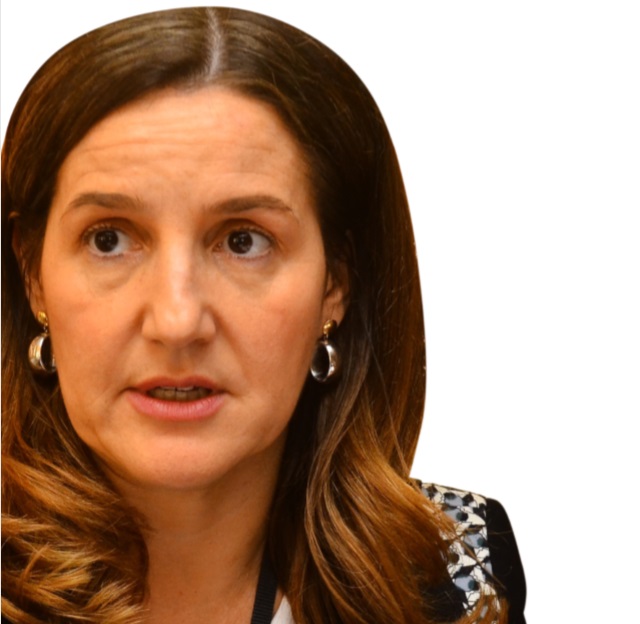
The International Monetary Fund (IMF) on May 9 released a report on Uganda. The Resident Representative for Uganda, Clara Mira, talked to The Independent’s Haggai Matsiko about its important points.
What is the IMF’s assessment of the performance of the Uganda economy?
Around 2011, Uganda started a period during which it grew less, and trend growth declined. But now we are seeing a recovery. The year that ended in June the economy grew by 6.1% and now we are predicting the current fiscal year to continue improving and reach about 6.3%, supported by construction, manufacturing and services.
In the medium term, we do see growth going from 6% towards 7% in the next five years or less. We are projecting based on assumptions of stable global environment, private sector confidence being maintained so the private sector credit continues to recover, the growth dividend from infrastructure development is realised, and oil sector investments are made as planned. We are assuming that oil is going to start flowing at some point in 2023 or so.
There is a view that ordinary Ugandans do not feel this recovery. How do you respond?
On the social front, the indicators are mixed. Indicators like infant mortality and maternal mortality have improved but some others have not. Primary school completion rates have deteriorated. The household survey of 2016 showed that national poverty increased from 19% to 21%. This means that about 21% of the Uganda population has to live with less than one dollar a day. This answers the question of why don’t we feel the recovery.
The other factor is agriculture. We know agriculture employs 70% of the population. When we look at the rate of growth of the agriculture sector over the last five years, the average growth was 2%. If the Uganda population grows at 3% this means that agriculture was growing below the capita terms. That affects 70% of the population. I think this also has to do with the feeling that the growth is not widespread.
In the report, how do you propose this should be addressed?
We are saying that Uganda needs to create 600,000 jobs just to match population growth. We need to generate inclusive and stable growth going forward and this is the basis of our report. There are several suggestions on how to get there, including continuing the investments in infrastructure, and supporting human capital development to ensure adequate budget allocations for social sectors and efficiency in public services.
What other issues do you raise in your report?
On the fiscal side, the first problem that we see is that Uganda doesn’t really have an effective fiscal anchor. In the last few years when we did our first Debt Sustainability Analysis in 2013, we thought that public debt was going to peak at around 31% of GDP. But following our latest analysis, we are projecting that by 2021/22, debt will peak at 50.7%. Therefore, we see that there has not been a guiding process to set what debt should look like because it has been increasing in short periods of times.
In June 2018, public debt reached 41.3%. This is the latest available number. According to our debt sustainability analysis, Uganda´s debt is at low risk of debt distress, but there are high vulnerabilities. It doesn’t mean that we are fully happy and comfortable because Uganda is at low risk distress because we see other indicators that concern us as well.
What are these other indicators that concern you?
One of the things that worry us is the speed at which debt has increased. When we look at 2013, since 2013-2014, debt has increased by 12% of GDP. Another issue is that interest payment rates have increased a lot. Now one out of every five shillings in revenue has to be used for interest. This is more than allocations for health and education. This traditionally happens for countries that are at a high or moderate risk of debt distress.
That is why our key advice is that Uganda needs to establish an operational fiscal anchor; something that gives a direction of fiscal policy, which now could be keeping debt at 50% of GDP. It is not a magic number but a good indicator that would give a buffer and provide some predictability.
And in terms of revenue mobilisation, what shifts do you find important to note?
The Domestic Revenue Strategy is being prepared and we think it is a very good idea. Government is taking a comprehensive medium term approach to revenue; looking at the five-year period, with improvements both in the tax policy and tax administration fronts. We do see potential to increase the tax to GDP by at least a half a percent per year. That would take us to around 2- 2.5% of GDP increase in the tax to GDP ratio.
We have focused a little bit on the fiscal side. What is worth noting on the monetary side?
Inflation has been subdued. The latest report for April shows that inflation is at 3.5%. Core inflation has increased to 4.8%. Bank of Uganda has a target of 5% inflation in the medium term. And we see this has been attained and it is likely to continue to be.
Also Bank of Uganda and Uganda as a whole now have over four months of imports in foreign exchange reserves and this is very good. It is higher than what the rule of thumb would suggest but given the vulnerability, we think it is a good position that should be maintained.
However, Bank of Uganda’s capital is in the negative and we think it should be recapitalised in the next budget. It is important to maintain an independent and efficient central bank.
 The Independent Uganda: You get the Truth we Pay the Price
The Independent Uganda: You get the Truth we Pay the Price



